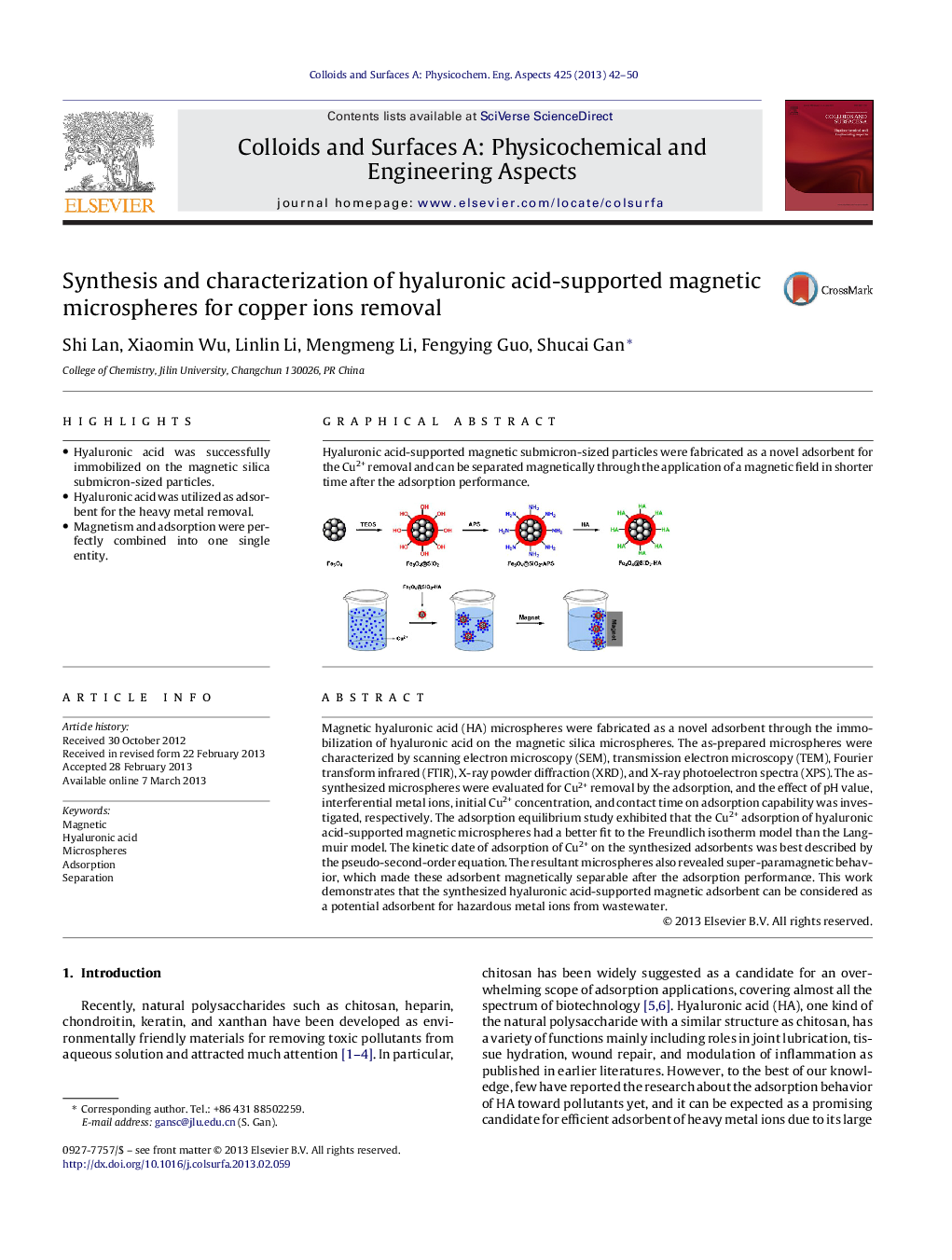| Article ID | Journal | Published Year | Pages | File Type |
|---|---|---|---|---|
| 593596 | Colloids and Surfaces A: Physicochemical and Engineering Aspects | 2013 | 9 Pages |
•Hyaluronic acid was successfully immobilized on the magnetic silica submicron-sized particles.•Hyaluronic acid was utilized as adsorbent for the heavy metal removal.•Magnetism and adsorption were perfectly combined into one single entity.
Magnetic hyaluronic acid (HA) microspheres were fabricated as a novel adsorbent through the immobilization of hyaluronic acid on the magnetic silica microspheres. The as-prepared microspheres were characterized by scanning electron microscopy (SEM), transmission electron microscopy (TEM), Fourier transform infrared (FTIR), X-ray powder diffraction (XRD), and X-ray photoelectron spectra (XPS). The as-synthesized microspheres were evaluated for Cu2+ removal by the adsorption, and the effect of pH value, interferential metal ions, initial Cu2+ concentration, and contact time on adsorption capability was investigated, respectively. The adsorption equilibrium study exhibited that the Cu2+ adsorption of hyaluronic acid-supported magnetic microspheres had a better fit to the Freundlich isotherm model than the Langmuir model. The kinetic date of adsorption of Cu2+ on the synthesized adsorbents was best described by the pseudo-second-order equation. The resultant microspheres also revealed super-paramagnetic behavior, which made these adsorbent magnetically separable after the adsorption performance. This work demonstrates that the synthesized hyaluronic acid-supported magnetic adsorbent can be considered as a potential adsorbent for hazardous metal ions from wastewater.
Graphical abstractHyaluronic acid-supported magnetic submicron-sized particles were fabricated as a novel adsorbent for the Cu2+ removal and can be separated magnetically through the application of a magnetic field in shorter time after the adsorption performance.Figure optionsDownload full-size imageDownload as PowerPoint slide
